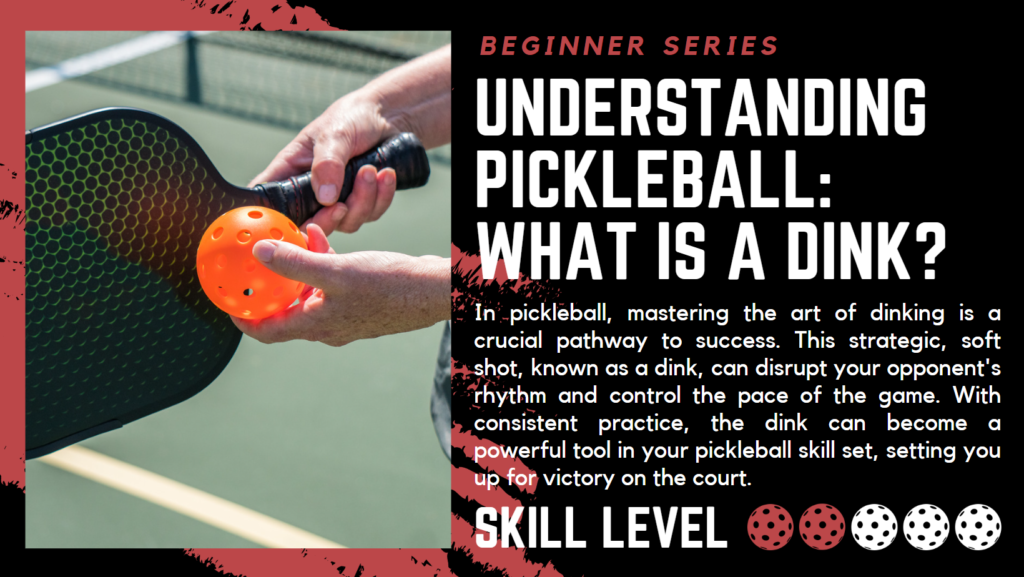
Mastering the Art of Dinking: An Essential Skill for Pickleball Success
In pickleball, mastering the art of dinking is a crucial pathway to success. This strategic, soft shot, known as a dink, can disrupt your opponent’s rhythm and control the pace of the game. With consistent practice, the dink can become a powerful tool in your pickleball skill set, setting you up for victory on the court.
Pickleball, with its blend of tennis, badminton, and table tennis, has grown significantly in popularity, with the “dink” being a cornerstone of strategic play. A dink is a delicately placed shot that glides just over the net, landing softly within the adversary’s non-volley zone (NVZ). This guide will walk you through the importance of the dink in pickleball, how to execute it, and the benefits you can reap from perfecting it.
What is a Dink in Pickleball?
A dink, in pickleball parlance, is a controlled, gentle stroke that sails just above the net, landing in your opponent’s non-volley zone. It’s not a power move, but a finesse one, aiming to keep the ball in play and maneuver your adversary around the court. Mastering the dink can give you an edge, potentially setting up for a winning shot.
The Importance of the Dink in Pickleball
Understanding the dink and its strategic importance is crucial to elevating your pickleball game. This skill allows you to control the pace of the game, maintain ball possession, and keep your opponent on their toes. A well-placed dink can disrupt your opponent’s rhythm, forcing them to move and make potentially game-changing decisions.
Mastering the Dink: Tips and Techniques
To execute a successful dink, you’ll need a blend of control, precision, and a keen understanding of the game’s geometry. Here’s a step-by-step guide to perfecting your dink:
- Adopt a short, compact stroke: The dink isn’t a power play, so a shorter stroke is essential to control the ball’s flight and landing.
- Employ a soft, upward motion: This helps give the ball the right arc to clear the net and drop into the NVZ.
- Open your paddle face: This allows the ball to acquire topspin, making it difficult for opponents to return.
- Aim close to the net: The closer your dink lands to the net, the harder it is for your opponent to make a strong return.
The Power of the Dink: Advantages and Benefits
Maintaining control: Dinks keep the ball in play, allowing you to set the pace of the game.
Forcing opponent movement: Well-placed dinks can make your opponent scramble around the court, disrupting their positioning.
Setting up winning shots: Dinks can create openings for more aggressive shots, especially if your opponent struggles with returning them.
Frustrating your opponent: Consistently successful dinks can psychologically pressure your opponent, potentially leading to mistakes.
Practice Makes Perfect!
Mastering the dink requires patience, diligence, and plenty of practice. Whether you’re practicing against a wall or with a partner, repetition is key. As you continue to practice, your understanding of when and how to use the dink will grow, and so will your proficiency in the game of pickleball. In conclusion, the dink is an invaluable tool in any pickleball player’s arsenal. It’s a strategic weapon that, when used effectively, can control the game’s tempo, frustrate opponents, and even set the stage for victory. Practice it, perfect it, and watch your pickleball game reach new heights.
